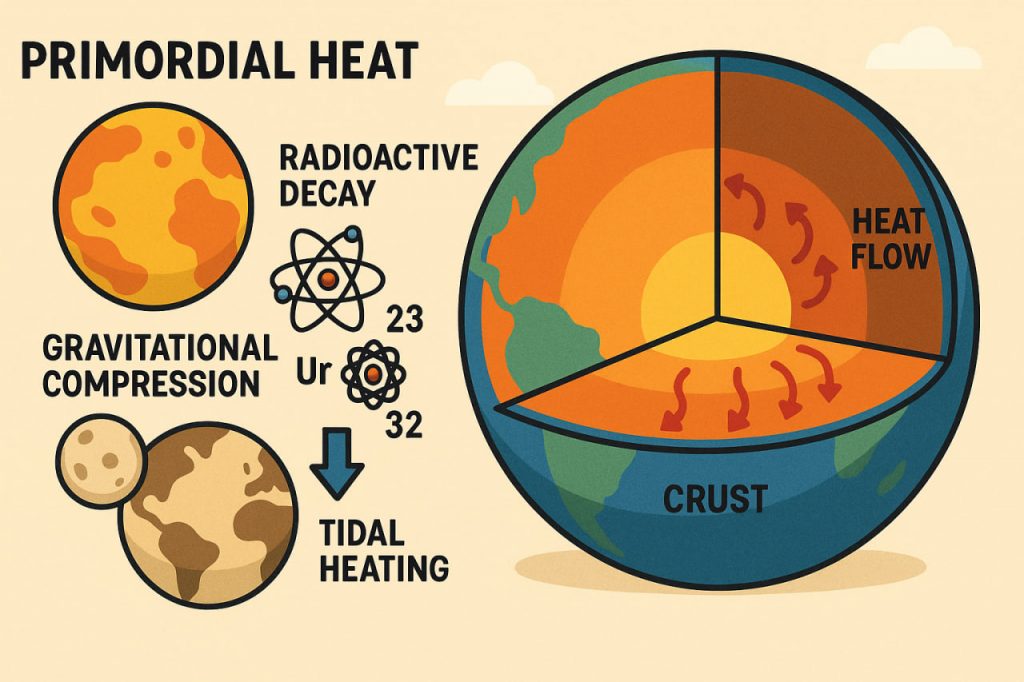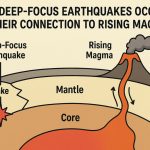The Earth is not only warmed by the Sun but also heated from within. This internal heat is a driving force behind volcanic eruptions, earthquakes, and the movement of tectonic plates. It originates from several processes that began during the planet’s formation and continue today. Without this heat, Earth would be geologically inactive, similar to the Moon.
Primordial Heat from Formation
One major source of internal heat is primordial heat, left over from Earth’s formation about 4.5 billion years ago. When dust and planetesimals collided to form the young Earth, their kinetic energy converted into heat. As the planet differentiated into core, mantle, and crust, friction and compression generated additional heat, much of which remains trapped deep inside.
Radioactive Decay
The dominant source of Earth’s current heat is the radioactive decay of unstable isotopes, such as uranium-238, thorium-232, and potassium-40. As these isotopes decay, they release energy in the form of heat. This process constantly replenishes Earth’s thermal energy, keeping the mantle and core hot even billions of years after the planet’s birth.
Gravitational Compression
Another contributor is gravitational compression. As Earth formed, its mass caused intense pressure at the core. This compression converted gravitational energy into heat. Today, the pressure in the core remains extreme, and while most of the heating from compression occurred early in Earth’s history, it still contributes to the overall thermal budget.
Tidal Heating
Though minor compared to other sources, tidal heating also affects Earth. The gravitational pull of the Moon and the Sun slightly deforms Earth’s crust, generating heat through internal friction. This effect is small but adds to the balance of internal heating processes.
Heat Flow to the Surface
The heat generated inside Earth slowly moves outward. This happens through conduction in the solid lithosphere and convection in the mantle, where hot rock rises and cooler rock sinks. At the surface, the heat escapes mainly through volcanic activity, mid-ocean ridges, and hot springs. On average, about 47 terawatts of heat flow from Earth’s interior into space.
Conclusion
Earth’s internal heat comes from a combination of primordial heat, radioactive decay, gravitational compression, and minor tidal forces. This heat powers geological processes that shape our planet, from volcanoes to mountain building. Without it, Earth would be a static and lifeless world, lacking the dynamic activity that makes it unique.
Glossary
- Primordial heat – leftover heat from Earth’s formation.
- Radioactive decay – breakdown of unstable isotopes releasing heat.
- Gravitational compression – heat generated by pressure inside the Earth.
- Tidal heating – frictional heating caused by gravitational pull from the Moon and Sun.
- Mantle convection – slow movement of mantle rock transferring heat.
- Heat flow – transfer of internal energy to the Earth’s surface.


